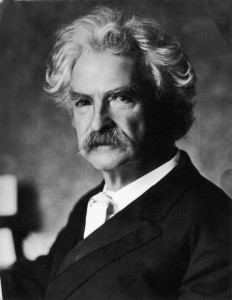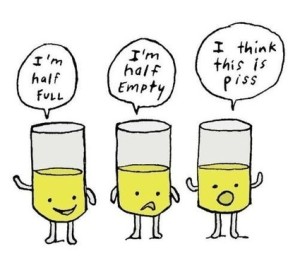Does the name Barry Marshall ring a bell?
Probably not if you are a mental health professional.
For decades, the Australian physician was persona non grata in the field of medicine — or perhaps stated more accurately, persona sciocca, a fool.
Beginning in the early 1980’s, Marshall, together with colleague Robin Warren, advanced the hypothesis that the bacteria heliobacter pylori was at root of most stomach ulcers. That idea proved exceptionally controversial flying, as it did, in the face of years of accepted practice and wisdom. Ulcers caused by something as simple and obvious as a bacterial infection? Bunk, the medical community responded, in the process lampooning the two researchers. After all, everyone knew stress was the culprit. The also knew the cure: certainly not antibiotics. Rather, antacids, sedatives, therapy and, in the more chronic and serious cases, gastrectomy–a surgical procedure involving the removal of the lower third of the stomach.
The textbook used in my Introduction to Psychology course in my first year at University boldly declared, “Emotional stress is now known to relate to … such illnesses as … peptic ulcers” (p. 343, Psychology Today: An Introduction 4th Edition [Braun and Linder, 1979]). The chapter on the subject was full of stories of people whose busy, emotionally demanding lives were clearly the cause of their stomach problems. I dutifully overlined all the relevant sections with my orange highlighter. Later, in my clinical career, whenever I saw a person with an ulcer, I told them it was caused by stress and, not surprisingly, taught them “stress-management” strategies.
The only problem is the field, my textbook, and I were wrong, seriously wrong. Stress was not responsible for stomach ulcers. And no, antacids, sedatives, and psychotherapy, were not the best treatments. The problem could be cured much more efficiently and effectively with a standard course of antibiotics, many of which had been available since the 1960’s! In other words, the cure had been within reach all along. Which begs the question, how could the field have missed it? Not only that, even after conclusively demonstrating the link between ulcers and the h.pylori bacterium, the medical community continued to reject Marshall and Warren’s papers and evidence for another 10 years (Klein, 2013)!
So what was it? Money, ignorance, hubris–even the normal process by which new scientific findings are disseminated–have all been offered as explanations. The truth is, however, the field of medicine, and mental health in particular, has a weakness–to paraphrase Mark Twain–for “knowing with certainty things that just ain’t so.”
How about these?
- Structural abnormalities in the ovaries cause neurosis in women;
- Psychopathology results from unconscious dynamics originating in childhood;
- Optimism, anger control, and the expression of emotion reduces the risk of developing cancer;
- Negative thinking, “cognitive distortions,” and/or a chemical imbalance cause depression;
- Some psychotherapeutic approaches are more effective than others.
The list is extensive and dates all the way back to the field’s founding nearly 150 years ago. All, at one point or another, deeply believed and passionately advocated. All false.
 Looking back, its easy to see that we therapists are suckers for a good story–especially those that appear to offer scientific confirmation of strongly held cultural beliefs and values.
Looking back, its easy to see that we therapists are suckers for a good story–especially those that appear to offer scientific confirmation of strongly held cultural beliefs and values.
Nowadays, for example, it simply sounds better to say that our work targets, “abnormal activation patterns in dlPFC and amygdala that underlie the cognitive control and emotion regulation impairments observed in Major Depressive Disorder” than, “Hey, I listened attentively and offered some advice which seemed to help.” And while there’s a mountain of evidence confirming the effectiveness of the latter, and virtually none supporting the former, proponents tell us it’s the former that “holds the promise” (Alvarez & Icoviello, 2015).
What to do? Our present “neuroenchantment” notwithstanding, is there anything we practitioners and the field can learn from more than 150 years of theorizing?
Given our history, it’s easy to become cynical, either coming to doubt the very existence of Truth or assuming that it’s relative to a particular individual, time, or culture. The other choice, it seems to me, is humility–not the feigned ignorance believed by some to be a demonstration of respect for individual differences–but rather what results when we closely and carefully examine our actual work.
Take empathy, for example. Not only do most practitioners consider the ability to understand and share the feelings of another an “essential” clinical skill, it is one of the most frequently studied aspects of therapeutic work (Norcross, 2011). And, research shows therapists, when asked, generally give themselves high marks in this area (c.f., Orlinksky & Howard, 2005). My colleagues, Daryl Chow, Sharon Lu, Geoffrey Tan, and I encountered the same degree of confidence when working with therapists in our recent, Difficult Conversations in Therapy study. Briefly, therapists were asked to respond empathically to a series of vignettes depicting challenging moments in psychotherapy (e.g., a client expressing anger at them). Each time, their responses were rated on standardized scale and individualized feedback for improving was provided.
 Now, here is the absolutely cool part. The longer therapists participated in the research, the less confident but more demonstrably empathic they became! The process is known as “The Illusion of Explanatory Depth.” Simply put, most of us feel we understand the world and our work with far greater detail, coherence, and depth than we really do. Only when we are forced ourselves to grapple with the details, does this illusion give way to reality, and the possibility of personal and professional growth become possible.
Now, here is the absolutely cool part. The longer therapists participated in the research, the less confident but more demonstrably empathic they became! The process is known as “The Illusion of Explanatory Depth.” Simply put, most of us feel we understand the world and our work with far greater detail, coherence, and depth than we really do. Only when we are forced ourselves to grapple with the details, does this illusion give way to reality, and the possibility of personal and professional growth become possible.
If this makes your head spin, get a cup of coffee and watch the video below in which Dr. Daryl Chow explains these intriguing results.
Until next time,
Scott
Scott D. Miller, Ph.D.
Director, International Center for Clinical Excellence
P.S. Marshall and Warren were awarded the Nobel Prize for their research in 2005. Better late than never.



Thanks Scott and Daryl. My take away from this is that if we are less confident about our abilities and behave empathicly then we will achieve better results.
For me, Erickson summerised this when he said that we can always be totally confident that the client has all the resourtces they need to overcome their problem. He invited the focus on the client and their wishes [listening], putting the self of the therapist aside [lowering our self confidence] and honouring each client’s individuality [empathy].
Your work is providing evidence for what Erickson invited 50 years ago.
Bravo!
I always thought that empathy meant to understand the point of view of the other, but with the proviso that that understanding included the explicit and implicit dimensions of the client’s experiencing, with a strong emphasis on the latter. Before Rogers offered his convoluted understanding of empathy in ‘57 or ‘59, he offered two earlier and far more concise ones. Both, if memory serves, are from the ‘40s. The shortest one contains “as the client seems to himself.” If that’s not an exact quote, it captures the essence of it.
Really great!!!!
Thank you
A thought about the question posed by Scott at the top of this post. I liken the current state of psychotherapy to the state of medicine before the discovery of microorganisms and antibiotics. Psychotherapy, likewise, lacks a consensus on what causes the most typical problems and an effective treatment; i,e,, one that causes the problem/symptom to disappear or at the very least any remnant is handled in a spontaneous; i.e., without forethought, and a more productive way.
Part of the key is understanding the presenting problem, understood as a psychological. “Injury,” in the following way: It has an interpersonal origin (or is assumed to until disproven) and the effect of which cannot be significantly altered by a conscious act. The other key part is the unforced – and therefore not retraumatizing – activation of the client’s emotional experiencing; i.e., when it emerges coincident with the client receiving sufficient support for their experiencing. Such unforced activation is the facilitation condition for my concept of therapeutic catharsis. It is based on the assumption that there exists a natural healing process for psychological injuries, and as such it transforms the therapist into a midwife, someone who creates the conditions for such a process to operate. This process has two parts. The first is a sympathetic, or fight or flight response, spontaneously followed by healing emotional responses such as crying, .
Forced activation of emotional experiencing is not therapeutic. This occurs outside of session when an unexpected stimulus activates too much unresolved hurt, and when a therapist submits a client to a too intense emotional experience, which overwhelms the pain processing mechanisms.